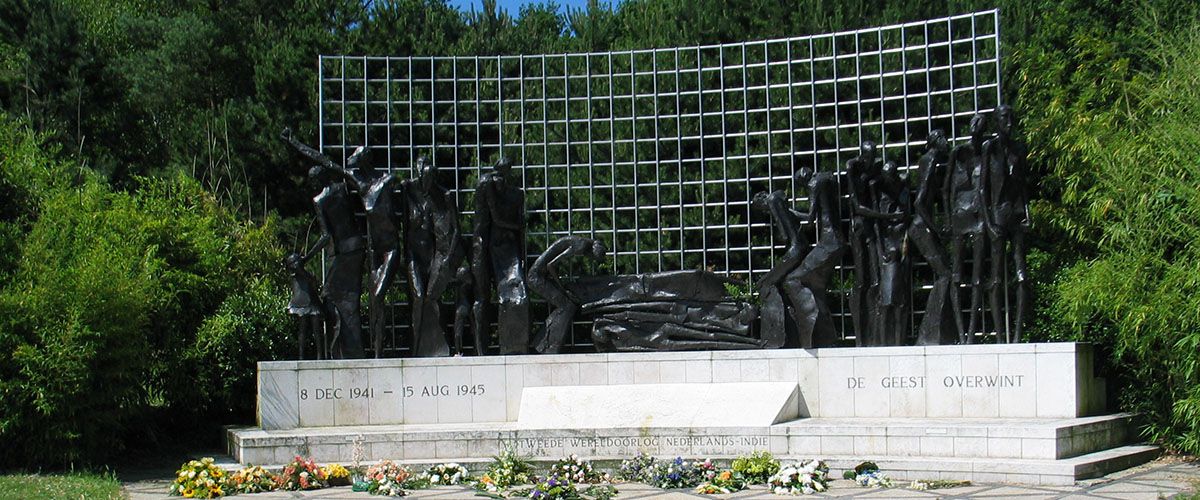A shared history
As a result of World War II in Indonesia and its fall-out, over two million people with ties to the former Dutch East Indies now live in the Netherlands. Each with their own story. A broad mix of Dutch with Indian, Moluccan, Papuan, Chinese or Indonesian backgrounds, amongst others. Commemorations throughout the country on or around 15 August pay tribute to this shared history. The Indies Monument is the focal point of this commemoration.
The monument consists of seventeen bronze figures in front of a tall cloth or fence surrounding a bier. The figures represent the many faces of suffering: pain, despair and resistance. On the bier in the centre lies death, flanked to the left and right by mourning female figures. The figures at the outer edges symbolise liberation. They have been awakened and are headed for the future full of fighting spirit, with clenched fists and heads held high. There is a map of Indonesia in the centre. The tall fence symbolises solidarity to some and to others, the enclosure behind which they were imprisoned. The monument bears the inscription “8 December 1941-15 August 1945” on the left. That date refers to the Netherlands’ declaration of war against Japan and Japan’s capitulation after the American bombing of the Japanese cities of Hiroshima and Nagasaki.
 Herinneringsroute Atlantikwall Den Haag
Herinneringsroute Atlantikwall Den Haag
